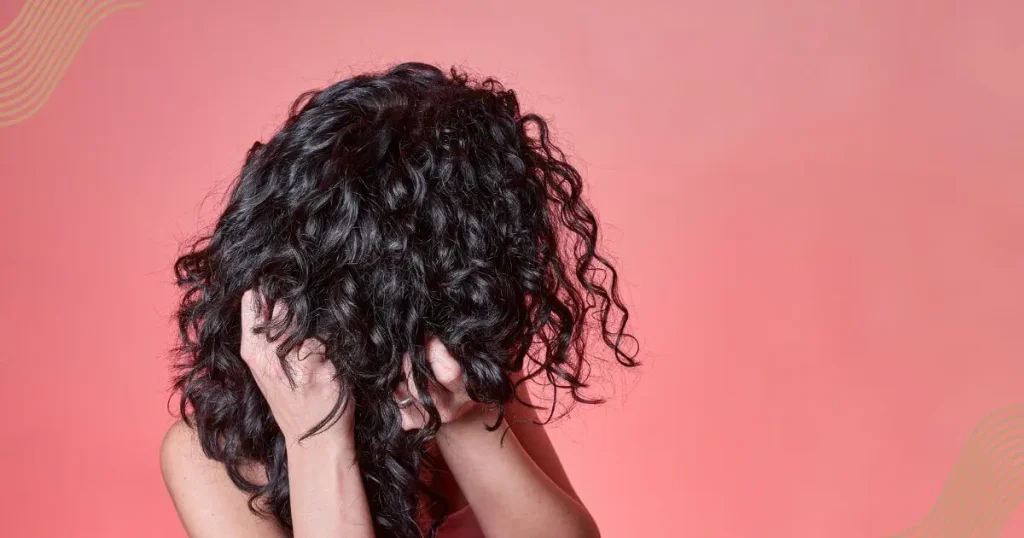Your hair reflects your overall health and deserves all the TLC you can offer. As we wade through the vast sea of hair care products and treatments, it’s easy to overlook a fundamental nutrient essential for maintaining hair health: proteins.
In this detailed blog post, we’ll unravel the mystery of when your hair is crying out for proteins, how you can integrate this vital nutrient into your hair care regimen, and ways to prevent future protein deficits. Whether you’re a hair enthusiast or a professional in the beauty industry, mastering the art of protein balance in hair care is vital to achieving those glossy, strong locks we all desire.
Table of Contents
Understanding the Importance of Protein in Hair Health
Before we jump into the signs that could point to a protein deficiency, it’s vital to understand why proteins are crucial for your hair. Hair is primarily made of a protein called keratin, so it’s no surprise that proteins play a critical role in maintaining its structural integrity.
When your hair doesn’t get sufficient protein—either through your diet or topically through treatments—it can lead to a range of issues, such as breakage, a lack of elasticity, and dullness. Protein is the building block for healthy hair, and understanding your hair’s protein needs can significantly enhance your hair care routine.
What are Proteins?
Proteins are large, complex molecules made up of chains of amino acids. Regarding hair care, proteins can help strengthen the hair shaft, repair damage, and promote overall growth and health.
The Role of Protein in Hair
Proteins in hair care supply the body with the necessary tools to maintain the hair’s structure and health. Here are some essential functions:
- Strengthening the hair shaft to prevent breakage
- Promoting elasticity to maintain shape under stress
- Conditioning and locking in moisture
- Repairing damage from heat and chemical treatments
- Facilitating the growth of more robust, more resilient hair
In the following sections, we’ll explore signs your hair is protein-deficient and offer helpful suggestions to remedy the situation effectively.
Signs Your Hair Needs Proteins
How do you know if your hair is protein-hungry? It’s not as if your hair can order a dietary supplement, so it’s up to you to understand the indications of protein deficiency.
Excessive Breakage
One of the most common signs of a protein-starved mane is excessive breakage. Your hair is more prone to breakage when the natural protein levels are depleted, which can be triggered by over-styling, environmental stressors, or mineral imbalances.
Lack of Elasticity
Elasticity, or the ability of your hair to stretch and return to its normal state without breaking, is a significant indicator of overall hair health. If your hair is snapping off quickly when wet or dry, it may be because of insufficient protein levels.
Dull and Limp Hair
Proteins play a crucial role in the structure of the hair shaft. When you don’t have enough protein, the cuticle can become damaged, leading to a rough and dull appearance.
High Porosity
High porosity hair absorbs and loses moisture quickly. This translates to difficulties keeping your hair hydrated and can suggest a protein imbalance.
These tell-tale signs can alert you to the need for a protein treatment. Fortunately, there are numerous ways to remedy protein deficiencies.
How to Incorporate Protein into Your Hair Care Routine
Once you’ve identified the signs, it’s time to take action. Various treatments and product applications can integrate protein into your hair care routine.
Protein-rich Products
Invest in shampoos, conditioners, and masks specifically formulated to be protein-rich. Look for ingredients such as hydrolyzed keratin, collagen, and wheat proteins, which can penetrate the hair shaft to infuse it with the necessary amino acids for strength and health.
DIY Protein Treatments
You can create protein treatments at home if you’re the DIY type. Ingredients like eggs, yogurt, and coconut milk are natural protein sources. They can be combined with other nourishing components to create a powerful protein pack for your hair.
Balanced Diet for Internal Nourishment
Remember, the health of your hair also depends on what you eat. Ensure that your diet includes sufficient protein sources like meat, fish, eggs, and plant-based foods such as lentils and quinoa to help nourish your hair from the inside out.
It’s important to remember that too much protein can also be detrimental, leading to a stiff and brittle texture, so finding the right balance for your hair is key.
Preventative Measures
Preventive care is as essential as treatment for achieving and maintaining hair health. Here are some ways to keep your hair’s protein in check:
Regular Trimming
Scheduling regular trims can help prevent split ends, which can travel up the hair shaft and cause further damage, necessitating more protein-heavy treatments. Trimming removes damage before it spreads, keeping your hair strong and healthy.
Avoiding Heat Damage
High temperatures from styling tools can break down the hair’s protein structure. Whenever possible, air-dry your hair and use heating tools sparingly. When you do use them, always apply a heat protectant to minimize protein loss.
Proper Hydration
Hydrated hair is healthier hair. Moisture and protein work hand in hand to keep the hair’s structure intact. A good quality moisturizing shampoo and conditioner can help maintain your hair’s moisture balance while focusing on protein restoration.
Ensuring your hair gets the right balance of protein, moisture, and other nutrients is a continual process. Regularly assessing your hair’s condition and adjusting your routine accordingly can go a long way in keeping your locks in top form.
Conclusion: The Protein-Packed Path to Healthy Hair
In understanding the signs of protein deficiency, you have taken the first step towards a healthier relationship with your hair. Remember, no two heads of hair are the same, and what works for one person may not work for another.
Listening to your hair, feeding it the proper nutrients, and engaging in preventive care will give you the foundation for a hair care routine that can weather any storm—environmental or the occasional bad hair day.
By incorporating these nuggets of advice into your daily regimen, you’re on your way to a luscious, protein-balanced crown that will turn heads and inspire others in your quest for flawless hair. Start your protein-packed transformation and see the difference it can make for your locks.
Frequently Asked Questions
What are the signs that my hair needs protein?
Watch for indicators like super porous hair, limp and stringy appearance, low elasticity, recent hair coloring, increased shedding, and a gummy texture. These suggest a protein deficiency.
How does protein affect hair health, and what types are essential?
Proteins like keratin and collagen are building blocks for hair strength. Different types cater to specific needs. Keratin, for instance, is vital for structural integrity.
What are the dangers of protein overload, and how can I handle it?
Protein overload may lead to stiffness and breakage. Recognize signs like high porosity and adjust your routine. Deep conditioning and a balanced approach can restore harmony.
How often should I use protein treatments on my hair?
Frequency depends on your hair’s needs. Overdoing it can lead to protein overload, while neglecting it may result in brittleness. Strike a balance based on your hair’s response.
Can high schoolers follow these haircare routines, or are they more suitable for adults?
Absolutely! These routines cater to a high school-level understanding. They are simple yet effective and tailored to suit a broad range of age groups.
How long does it take to see results after adjusting my haircare routine?
Results vary based on individual hair types and conditions. Consistency is vital; visible improvements with a dedicated and personalized routine may be noticed over several weeks.
- How to Use Aloe Vera for Acne: A Comprehensive Guide - June 1, 2024
- Jojoba Oil for Hair: How to Use for Maximum Benefits - May 19, 2024
- 8 Benefits of Jojoba Oil for Skin: The Ultimate Guide - May 18, 2024



